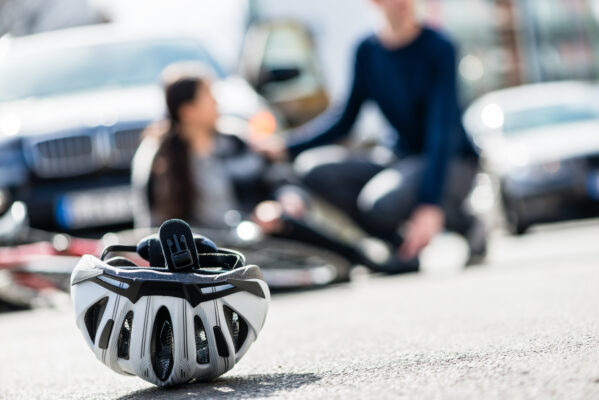As the popularity of cycling continues to rise, ensuring the safety of bicyclists becomes an essential responsibility for cities like Buffalo. Adequate city infrastructure plays a crucial role in promoting bicycle safety, providing a conducive environment for cyclists to navigate the streets safely. At Andrews, Bernstein & Maranto, PLLC, we understand the importance of creating a secure environment for all road users. In this article, we explore the significance of city infrastructure in bicycle safety and outline the requirements and recommendations for Buffalo.
The Impact of City Infrastructure on Bicycle Safety
Proper city infrastructure design and maintenance significantly contribute to the safety of cyclists. Here are some key elements that enhance bicycle safety:
- Protected Bicycle Lanes: Dedicated and protected bicycle lanes are essential for creating a safe space for cyclists. Separating bicycles from vehicular traffic reduces the risk of accidents and provides a sense of security to riders.
- Clear Signage and Markings: Well-designed signs and road markings specifically catered to bicycles help guide both cyclists and motorists, minimizing confusion and preventing potential collisions.
- Intersection Safety: Intersection design plays a crucial role in bicycle safety. Implementing features such as bicycle-specific traffic signals, designated turning lanes, and clearly marked crossings improve safety and visibility for cyclists.
- Proper Lighting: Adequate lighting along cycling routes ensures that cyclists are visible to motorists and other road users, reducing the risk of accidents, especially during the evening hours.
- Maintenance of Road Surfaces: Smooth road surfaces free from potholes, debris, and other hazards are vital for the safety of cyclists. Regular maintenance and repair of cycling infrastructure prevent accidents caused by road defects.
Requirements for Bicycle Safety in Buffalo
To improve bicycle safety in Buffalo, the city needs to address the following requirements:
Expanded Bicycle Infrastructure: Buffalo should invest in expanding its bicycle infrastructure by developing more protected bicycle lanes and connectivity throughout the city. This network should encompass major roads, intersections, and popular cycling routes.
Enhanced Intersection Design: Emphasizing intersection safety is crucial to protect cyclists. Buffalo should prioritize the implementation of bicycle-specific traffic signals, turning lanes, and clearly marked crossings at key intersections.
Education and Awareness Campaigns: Raising public awareness about bicycle safety through education campaigns can help promote a culture of respect and understanding between motorists and cyclists. This can be achieved through public service announcements, school programs, and community events.
Collaboration with Bicycle Advocacy Groups: Engaging with local bicycle advocacy groups and seeking their input on infrastructure planning can lead to more cyclist-friendly designs. These collaborations foster a sense of ownership among the cycling community and ensure their needs are considered.
Enforcement of Traffic Laws: Strict enforcement of traffic laws, including speed limits, yield-to-cyclist regulations, and prohibition of parking in bike lanes, is essential to protect cyclists. Collaborating with law enforcement agencies to ensure compliance and holding accountable those who violate traffic laws can significantly improve bicycle safety.
Green Infrastructure Integration: Incorporating green infrastructure elements, such as tree-lined streets, rain gardens, and bioswales, can enhance the overall cycling experience while promoting sustainable practices. Green infrastructure also contributes to improved air quality and a more pleasant urban environment for all residents.
Bicycle Parking Facilities: Establishing secure and easily accessible bicycle parking facilities throughout the city encourages more individuals to choose cycling as a mode of transportation. Strategically located bike racks, lockers, and shelters provide convenience and peace of mind to cyclists, reducing the risk of theft and vandalism.
Recommendations for Bicycle Safety in Buffalo
To further enhance bicycle safety in Buffalo, we recommend the following:
Regular Safety Audits: Conducting routine safety audits of existing bicycle infrastructure can identify potential hazards and areas for improvement. These audits should involve input from cyclists, city officials, and safety experts.
Multi-modal Integration: Integrating bicycle infrastructure with existing public transportation systems encourages people to use bicycles as a mode of commuting. This could include secure bicycle parking at transit stations and the inclusion of bicycles on public transportation.
Community Engagement: Encouraging public participation in the planning and development of bicycle infrastructure fosters a sense of community ownership. Public meetings, surveys, and feedback mechanisms allow citizens to voice their opinions and contribute to the decision-making process.
Data-Driven Approach: Utilizing data on cycling patterns, accident hotspots, and near-miss incidents can help identify high-priority areas for infrastructure improvement. Data-driven decision-making ensures targeted investments in bicycle safety.
Bicycle-friendly Street Design: Implementing bicycle-friendly street design principles, such as traffic calming measures, narrower travel lanes, and raised intersections, helps create a safer and more comfortable environment for cyclists. These design elements encourage motorists to slow down, increasing overall road safety.
Bicycle Education and Training: Promoting bicycle education programs for both cyclists and motorists is crucial for fostering a culture of mutual respect and understanding on the road. Offering cycling safety courses, driver education programs, and sharing educational materials can significantly enhance awareness and reduce the risk of accidents
Continuous Monitoring and Evaluation: Regular monitoring and evaluation of implemented infrastructure and safety initiatives allow for necessary adjustments and improvements. This includes gathering feedback from cyclists, conducting surveys, and analyzing accident data to identify areas for further enhancement.
At Andrews, Bernstein & Maranto, PLLC, we are committed to advocating for the safety of bicyclists in Buffalo. We urge city officials, community leaders, and citizens to prioritize bicycle safety by investing in robust city infrastructure, implementing our recommendations, and working collaboratively to create a safe environment for all road users.
Let’s join forces and make Buffalo a model city for bicycle safety, where cyclists can confidently navigate the streets and enjoy the many benefits of cycling.
Contact us today to learn more about our commitment to bicycle safety and how we can assist in legal matters related to bicycle accidents.
